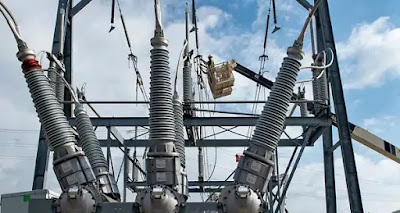Here we are going to discuss some very important current transformer interview questions with proper answers which are mostly asked of Electrical Graduates in every industrial interview as well as in the university exam viva. So please go through all these CT interview questions with their appropriate answers to improve your subject knowledge.
What is a Transformer?
What is an Instrument Transformer?
- Current Transformer (CT)
- Potential Transformer (PT)
What is a Current Transformer?
What are the types of Current Transformer?
- Ring type CT
- Core type CT
- Shell type CT
Why Current Transformers are used for measurement?
- To extend the range of the existing measuring instrument (Ammeter).
- To isolate the circuit of measuring instruments from a high-voltage line.
What is the turn ratio of the current transformer?
What is the burden on C.T.?
The burden of CT is the maximum load (in VA) that can be applied to the secondary of CT. It can be expressed in two ways. The burden is expressed as the total impedance (in ohm) of the circuit. It can also be expressed as total volt-ampere (VA) and power factor at a certain value of voltage or current and frequency.
Is the current transformer a step-up transformer?
What are the basic differences between CT and PT?
- C.T. is connected in series with the HT line whereas P.T. is connected in parallel to the HT line.
- In C.T, the no. of turns becomes inversely proportional to the current whereas in P.T no. if turns become directly proportional to the voltage.
- In CT the primary has one or more turns of thick conductors and the secondary has a large no of turns of thin conductors whereas in PT the primary has a large number of turns of thin conductors and the secondary has a few number of turns of thick wires.
- C.T. is a step-up instrument transformer that steps down the current whereas P.T. is a step-down instrument transformer that steps down the voltage up to measuring range.
Why the secondary terminal of CT should not be left open-circuited?
What is the knee point voltage of CT?
How to calculate the knee point voltage of CT?
What are errors in C.T.?
- Ratio error:- The ratio error is the amount by which the secondary current differs from the exact proportionality of the primary current of CT. It is expressed in the percentage of rated secondary current.
- Phase difference error:- The phase difference error is the angle by which the secondary current differs in phase from the primary current of CT. It is expressed in minutes of arc.
At what load the phase angle error of CT will be negative?
If the core of CT is permanently magnetized then how will you demagnetize it?
What is meant by turn compensation?
What materials are used for the core of C.T. and why?
In order to reduce the ampere-turns (AT) needed the core of a C.T. must have high permeability, a low flux density, small iron loss, and low phase difference error. Suitable materials for the core of CT are Silicon steel which has the maximum permeability in the range of 4500 at flux densities of approx 5000 lines/cm2 with the phase difference error limited to 1.5 to 2⁰. A nickel-iron alloy (Mu-metal) which contains a small amount of copper having a maximum permeability of 80000 at flux density near about 3500 lines/cm2 with phase difference error below 0.5⁰ is also used for the core of CT.
What is the effect of saturation on the performance of C.T.?
The increase in the excitation current of CT causes the reduction in secondary output which reduces the speed of over-current relays. The saturation of CT also disturbs the balance in differential relays thus affecting the stability of protection. Therefore the effect of saturation makes the operation of CT unsatisfactory.
Also Read:
